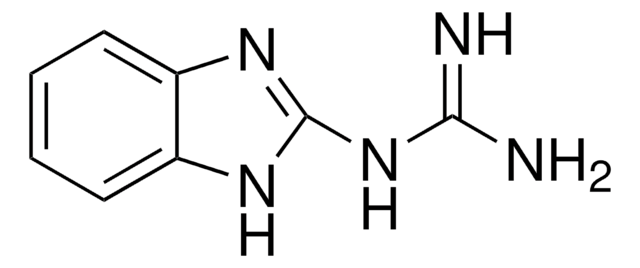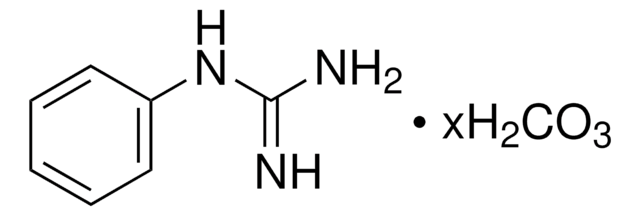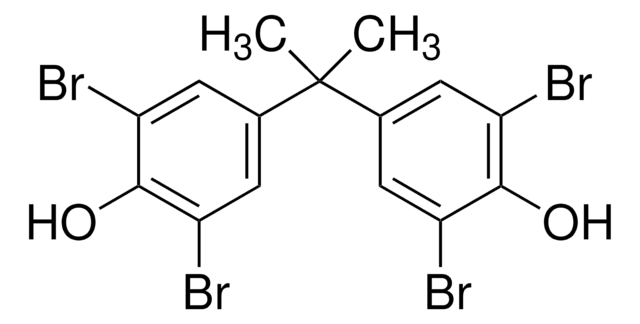164216
1-Phenylbiguanide
98%
Sinónimos:
1-(Diaminomethylidene)-2-phenylguanidine, 1-Carbamimidamido-N-phenylmethanimidamide, N-Phenyl-N′-guanylguanidine, N-Phenylbiguanide, N-Phenylimidodicarbonimidic diamide, N1-Phenylbiguanide, PBG
About This Item
Productos recomendados
Nivel de calidad
Análisis
98%
formulario
solid
mp
135-142 °C (lit.)
solubilidad
alcohol: freely soluble
water: freely soluble
grupo funcional
amine
cadena SMILES
NC(=N)\N=C(/N)Nc1ccccc1
InChI
1S/C8H11N5/c9-7(10)13-8(11)12-6-4-2-1-3-5-6/h1-5H,(H6,9,10,11,12,13)
Clave InChI
CUQCMXFWIMOWRP-UHFFFAOYSA-N
Información sobre el gen
mouse ... Htr3a(15561)
Descripción general
Aplicación
- 4-chloro-2,5-dihydro-2,5-dioxonaphtho[1,2-d]imidazole-3-carboxylic acid phenyl amide
- 6-chloro-8-phenylamino-9H-7,9,11-triaza-cyclohepta[a]naphthalene-5,10-dione
- 4-dimethylamino-5,10-dioxo-2-phenylimino-5,10-dihydro-2H-benzo[g]quinazoline-1-carboxylic acid amide
Código de clase de almacenamiento
11 - Combustible Solids
Clase de riesgo para el agua (WGK)
WGK 3
Punto de inflamabilidad (°F)
Not applicable
Punto de inflamabilidad (°C)
Not applicable
Equipo de protección personal
Eyeshields, Gloves, type N95 (US)
Elija entre una de las versiones más recientes:
¿Ya tiene este producto?
Encuentre la documentación para los productos que ha comprado recientemente en la Biblioteca de documentos.
Nuestro equipo de científicos tiene experiencia en todas las áreas de investigación: Ciencias de la vida, Ciencia de los materiales, Síntesis química, Cromatografía, Analítica y muchas otras.
Póngase en contacto con el Servicio técnico








